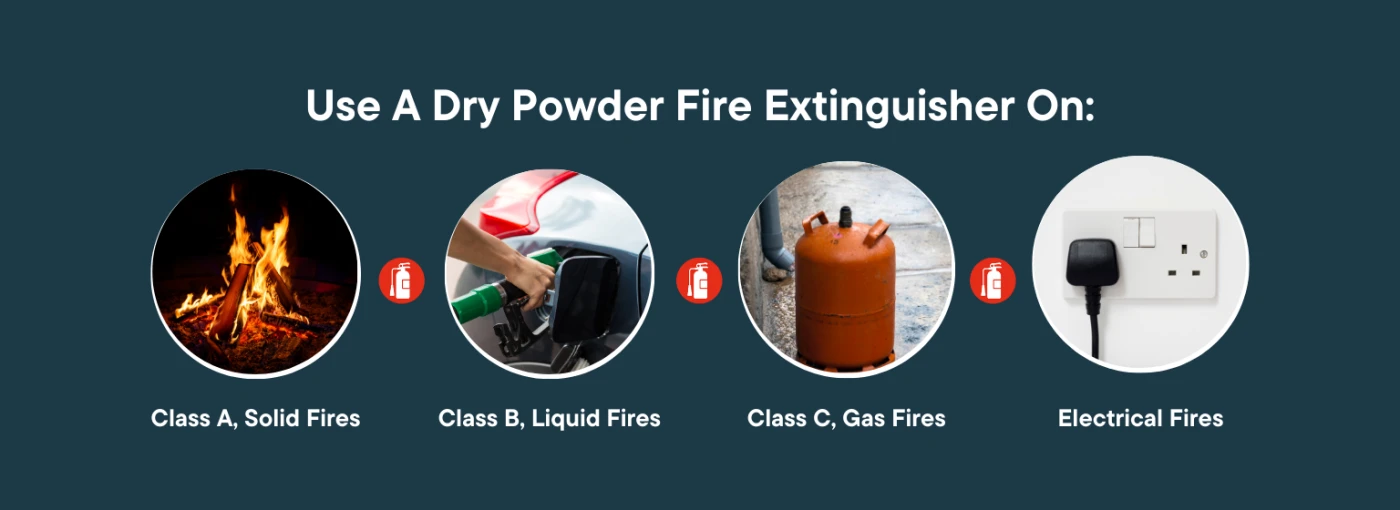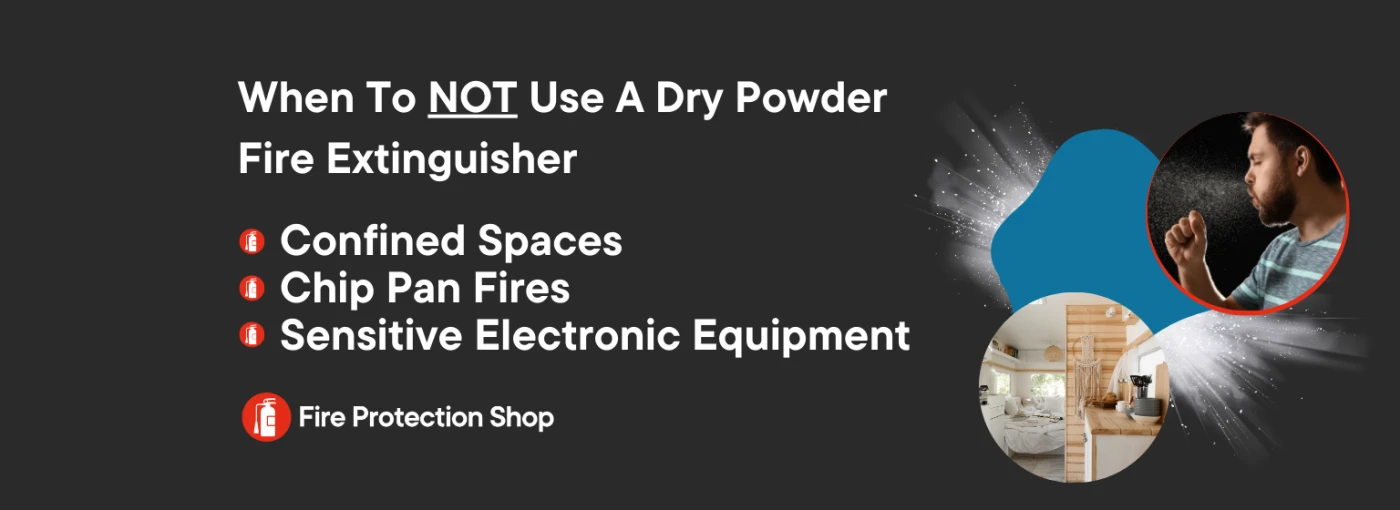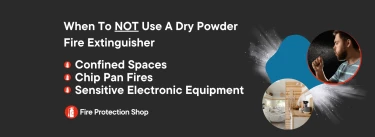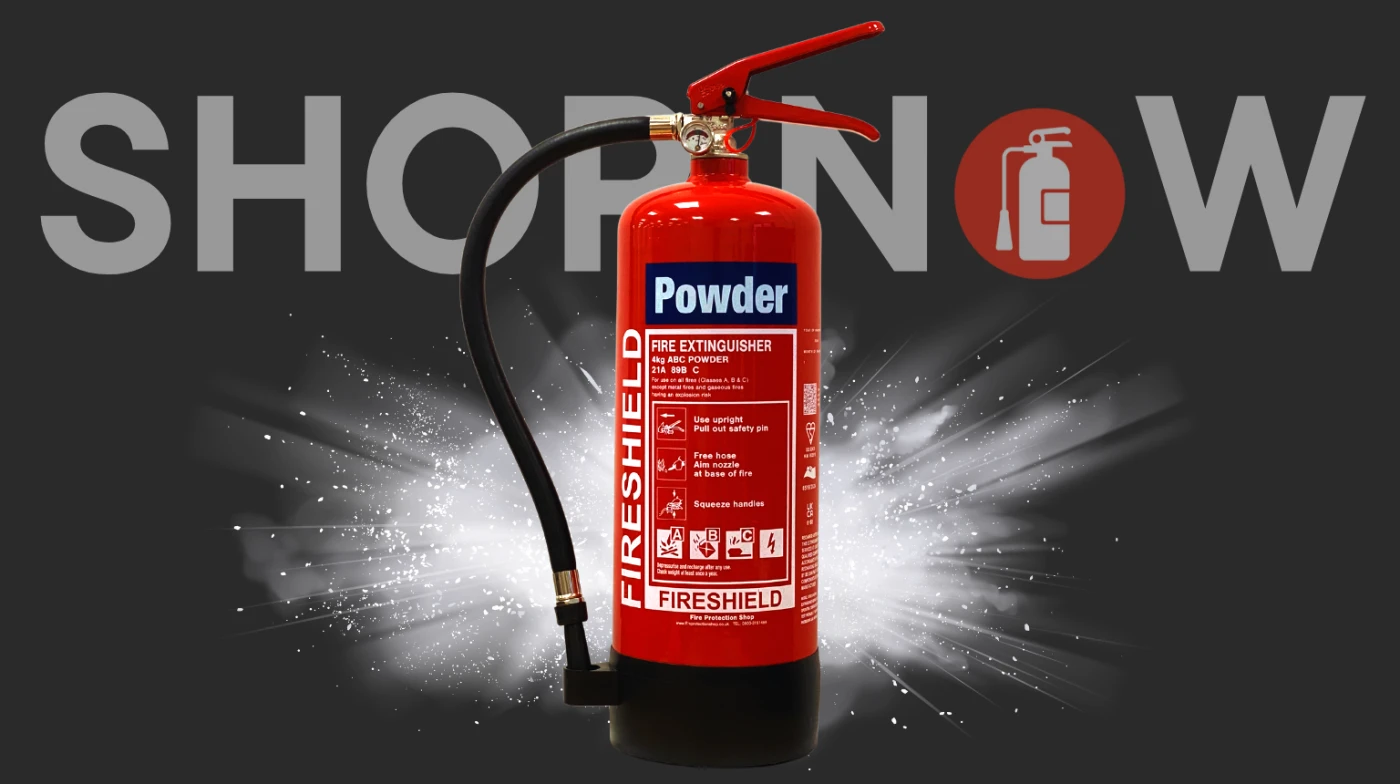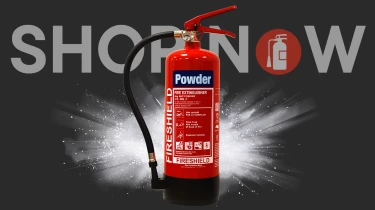
Need assistance?
Need Assistance? Call Us 0330 058 0631





















 Book a service
Book a service

28/02/2025 • by Chris Bird
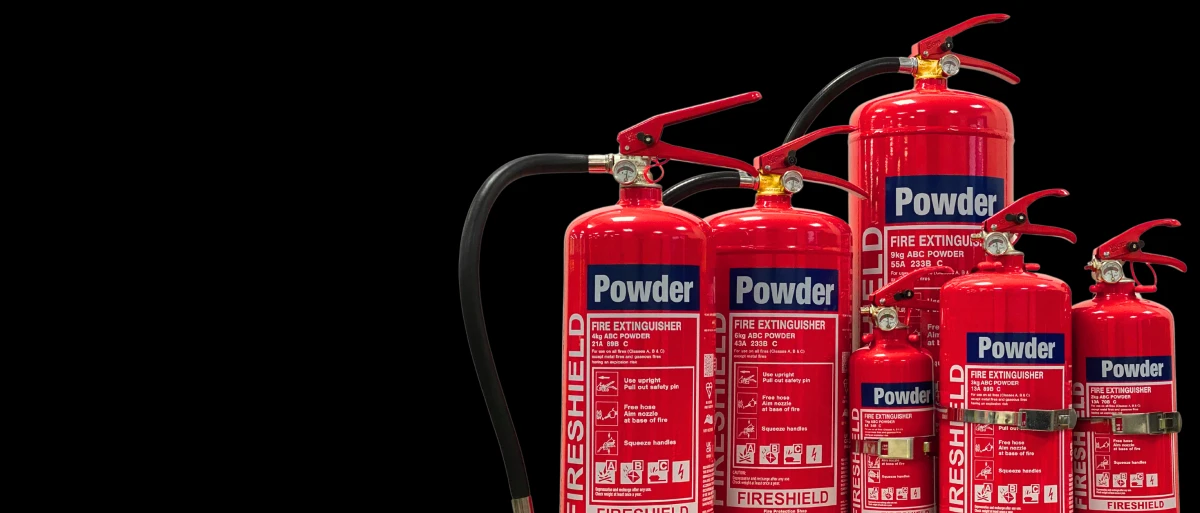
A dry powder fire extinguisher is one of the most versatile options available. It’s often called an ABC fire extinguisher because it works on Class A, B, and C fires.
In this guide, we’ll cover how dry powder extinguishers work, why they’re so effective, where to use them, the different types available, and how to spot one easily. Click here for other fire extinguishers
A dry powder extinguisher is used for Class A, Class B, and Class C fires.
Dry powder fire extinguishers tackle wood, paper, and fabric (Class A), flammable liquids like petrol (Class B), and gas fires (Class C). They also work on electrical fires, but the powder can be messy. Ideal for garages, workshops, and industrial sites.
In 2023/24, there were approximately 7,000 workplace fires recorded, marking a significant decline of 25% over the past decade.
Learn more about Fire Extinguisher Classifications and Types

ex vat
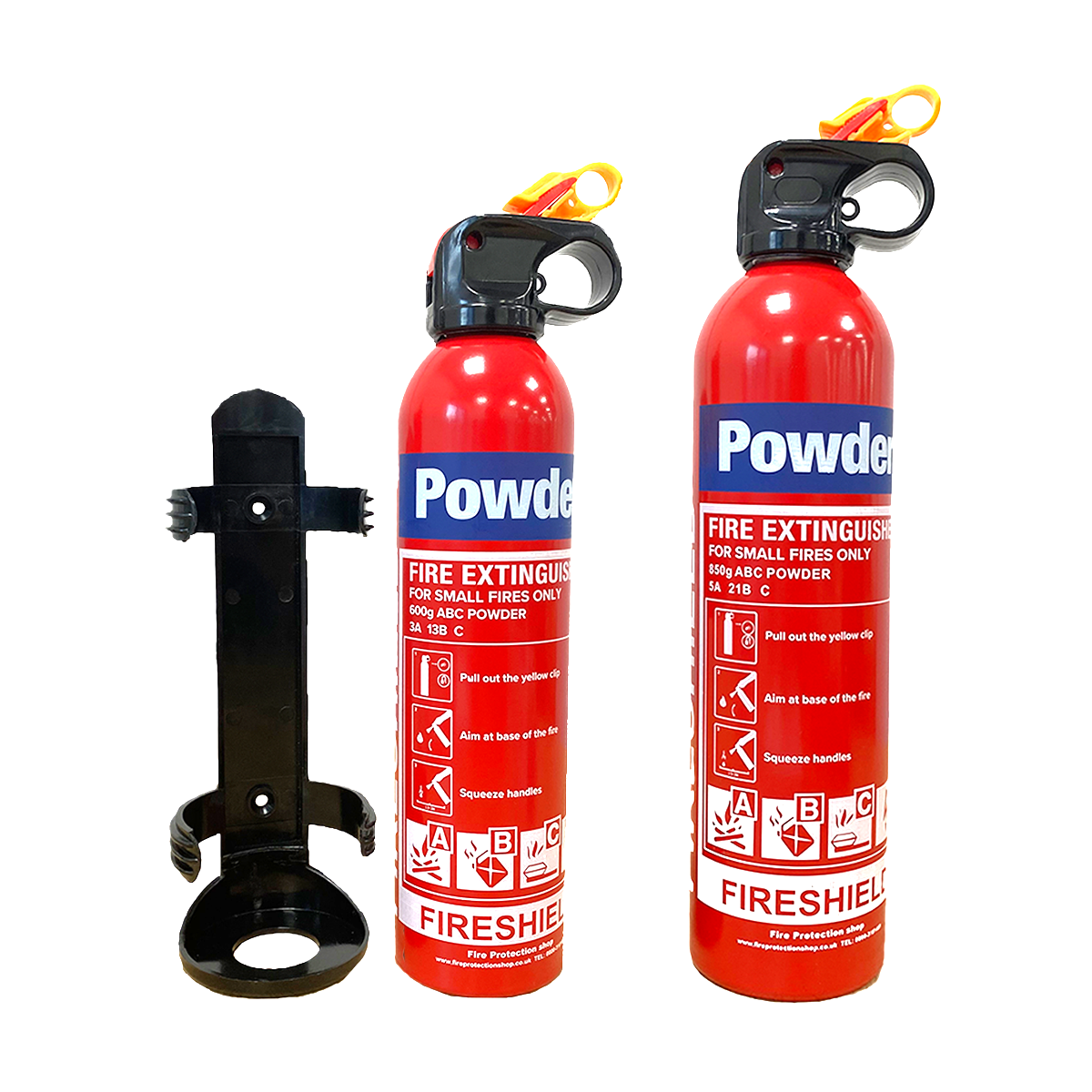
ex vat

ex vat

ex vat
.png)
ex vat
A dry powder fire extinguisher smothers flames by cutting off oxygen and disrupting the chemical reaction of the fire.
The fine powder is often made of monoammonium phosphate or sodium bicarbonate.
It coats the burning material and prevents the fire from spreading.
Dry powder works on Class A, B, and C fires, making it versatile.
However, the residue can be messy and may damage electrical equipment.
Once released, it creates a barrier over the fire, cutting off its oxygen supply. Without oxygen, the fire can’t burn or reignite, stopping it in its tracks.
Avoid using a dry powder extinguisher in small, enclosed spaces. The powder can reduce visibility and make breathing difficult. Don’t use dry powder on chip pan fires (Class F) or reactive metal fires unless it’s a specialist type. Lastly, powder can damage electrical equipment, so it’s not ideal for offices or server rooms.
MAP 50 stands for Monoammonium Phosphate 50%, a high-performance fire-extinguishing powder.
It’s used in ABC dry powder fire extinguishers and is highly effective on Class A (solids), Class B (liquids), and Class C (gases) fires. The 50% refers to its purity level, making it more effective than lower-grade powders. It melts and coats surfaces, cutting off oxygen and stopping re-ignition.
MAP 90 stands for Monoammonium Phosphate 90%, a top-grade fire-extinguishing powder. With 90% purity, it’s more effective than lower-grade powders. Similar to the MAP 50, it melts, coats surfaces, and smothers flames, preventing re-ignition. Ideal for high-risk environments.
B+ Powder is a dry chemical fire extinguisher powder designed for Class B and C fires. B+ is so potent, that it contains the force of an 8kg fire extinguisher in only a 2kg cylinder.
B+ Powder works by smothering the fire and interrupting the chemical reaction.
This specialist powder is more effective than standard powders for Class B fire types.
It’s commonly used in industrial and commercial settings.
In the UK, a dry powder fire extinguisher, according to BS EN 3, is red with a distinctive French blue label.
The label will also list the fire classes it covers and include clear instructions on use. The pressure gauge is visible, showing if it's fully charged.

ex vat

ex vat

ex vat

ex vat
.png)
ex vat
In the year ending September 2024, England's fire and rescue services attended 598,504 incidents.
These incidents included 133,072 fires.
False alarms increased by 2.9%, reaching 254,041 in 2024.
.png)
09/08/2024 • by Lynsey B
02/10/2025 • by Megan Downing
We use cookies to enhance your site experience. Choose your preferences below.

